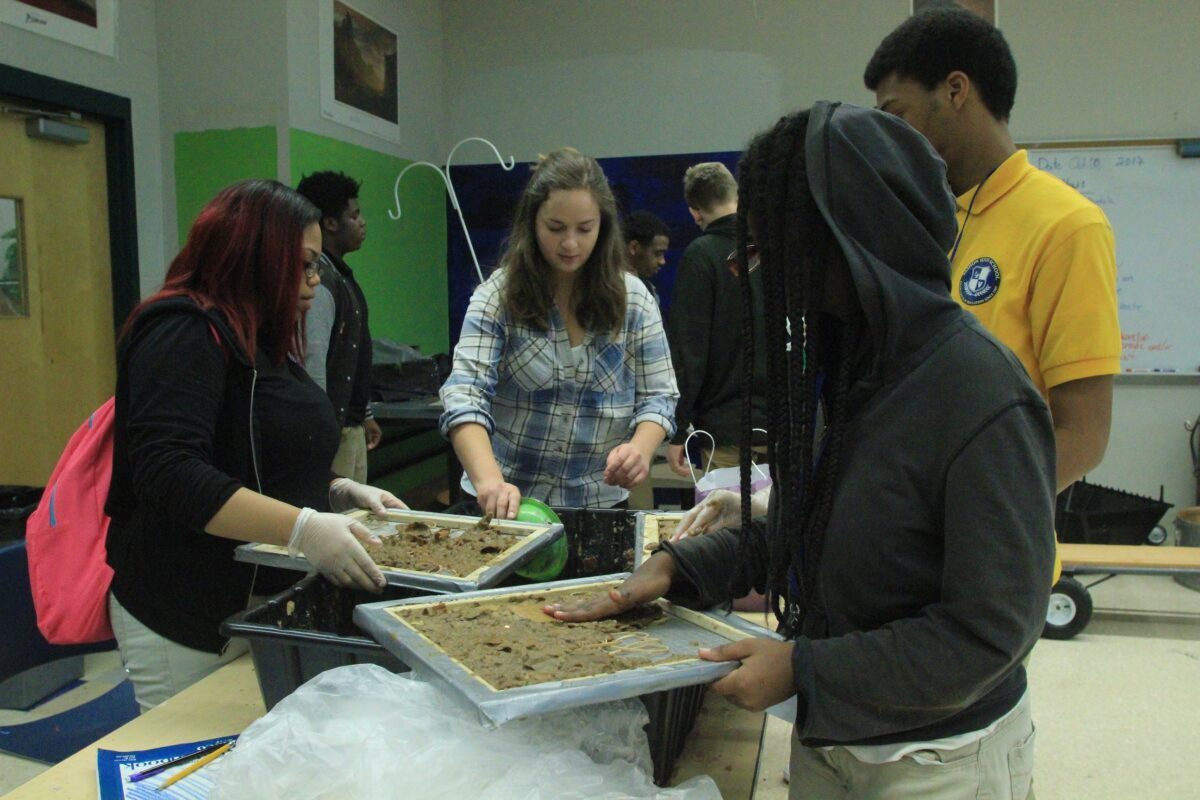Vashon instructor Tim Jennings and CAM’s Miriam Ruiz busily prepare the art room for the arriving students. “We’ll need the press, please,” Miriam tells Tim as she unlocks a supply cabinet. Two students stand by the door to the classroom, feigning innocence. “Did you two just lock the door?” Tim inquires. “He did!” both say in unison. Teenage life has not changed.
On the walls of the classroom are a variety of images: Harriet Tubman, a color chart, a Picasso print. With the class seated, Miriam tells them “You know what time it is … homework!” The requisite groans fill the room. The students were asked to draw their rooms. One student has created an architectural plan. Another gave herself the challenge of perspective, drawing her room from the outside looking in.
Miriam offers encouragement, and a new assignment: show your identity. “How do you identify yourself?” Miriam asks. “For example, I identify myself as a woman, a Latina, a Chicana, and a mother.” She shows the students a collage she made, her own homework assignment. She’s given herself a halo, a serape for a wardrobe, and placed a prickly pear on her head. Miriam informs them that to look Mexican means “you have cactus in your face.” The students laugh at this idea.
The main activity for the morning involves papermaking and printmaking. Sarah Harford, a local artist who is leading the students’ explorations into papermaking-as-art arrives and quickly the classroom is engaged in various activities. Some join Harford in the slow—yet “meditative process,” Harford suggests—of tearing cardboard into pulp. Harford has selected cardboard as a medium to make the students think about the transformation of everyday material into art, elevating a common, throwaway object.
Miriam works with students on their actual prints, using cutting tools to create their images. “Take your time. Don’t rush,” Miriam tells them. “If you get frustrated with this project, take breaks. This is something you can do and talk with someone while you do it. Or go work on paper pulping for awhile.”
One student sits mournfully above his work-in-progress. “You’ve been giving yourself to hard a time. Look at what your doing! You’re good!” He tries not to smile.
Since August 2017, Miriam Ruiz, CAM’s School and Community Programs Manager, has been meeting with two sophomore introductory art classes. She collaborates with Jennings and local artists who have signed on for quarterly projects. Roland Houston, a Vashon alumnus, at the start of the year worked with the students on constructing a sculptural installation out of cardboard, which eventually took a place of distinction in the school’s atrium, and then in CAM’s Education Gallery.
Vashon had been without a consistent art program for five years. Miriam received a call from the school in the spring. Out of that a project-based curriculum was born, continuing throughout the year, a partnership between an art institution and a high school less than a mile away from each other
Toward the end of the class that day, a student explains her art concept to me. She has made a Picasso-like portrait. “Half of her face is a black woman,” she tells me. “The other half is a Caucasian man. But they are equal.”
